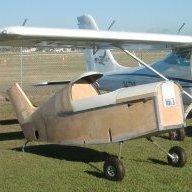I agree with skippydiesel, there is no need to open the cooling system cap (pressure cap) at every pre-flight. What you need to do is get familiar with your overflow bottle level:
- what is the level stone-cold (winter) and cold engine on a hot day? depending on your bottle diameter, there can be quite some different levels.
- what is the level when the engine is hot?
- keep an eye out for any stains around the overflow bottle, this indicates a leaking radiator cap or overheating cooling system
- don't forget to include the radiator cap in the 5-yearly rubber hose replacement program (gasket is rubber and the most likely part to deteriorate and cause loss of cooling system pressure -> loss of coolant)
Radiator cap is BMW P/N 17112345074 at about 1/2 of the Rotax price (fitted to BMW motorcycle F650 with Rotax engine).
I had one event of total loss of coolant due to a (LAME-fitted) hose coming off on climb-out. caught it in time from increasing CHT (older style heads), reduce power, returned and landed normally. With about 4,000rpm, the CHT went back to normal thanks to the air-cooled cylinders. No damage to the engine, have done about 200h since.
At the last annual, I removed the cap to inspect the condition and it was leaking slightly afterwards, noticed the stains on the overflow bottle after the test flight. The less you touch it, the fewer problems you are likely to have.
Thomas






